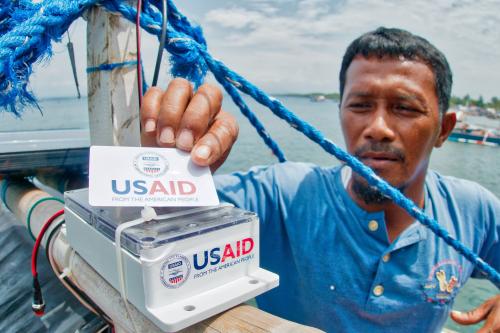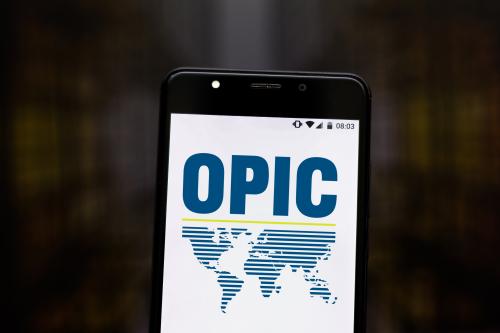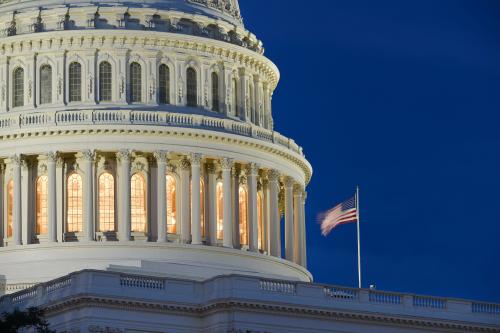The president’s budget proposal is now on the streets of Washington, D.C. Currently, it would protect funding for the State Department and the Agency for International Development and related activities from further cuts. The combined annual budget for development aid, security aid and diplomacy has averaged close to $60 billion over the past half decade. That is now slated to decline to about $50 billion, partly due to reduced war-related costs. But this amount could come under intense scrutiny. Moreover, if there is no grand bargain between the president and the Congress, sequestration could force reductions of a further 10 percent.
Such an outcome would be bad for our nation’s security. As each of us has testified on Capitol Hill in past years America’s ability to protect itself and advance its global interests often depends as much on its “softer” power as it does on our nation’s armed forces. For example, though Latin American countries were themselves primarily responsible for their progress, the headway many of them made in stabilizing their countries in recent years has been a big plus for American security, too — and American aid had a role in that progress. That is part of why we have supported a budget deal that would repeal sequestration and achieve most further deficit reduction through savings in entitlement spending with similar increases in revenue generation. Implicit in our approach was the thinking that lawmakers should avoid the temptation to gut foreign aid just because it generally lacks a strong constituency in the United States.
America’s spending on development and diplomacy and security aid — the so-called 150 account — has strengthened under Presidents George W. Bush and Barack Obama. That has been a positive and long overdue development. Funds for diplomacy and development were starved in much of the 1990s. Some of the reductions in that earlier period were warranted, admittedly, as aid then was not always as productive as it might have been.
Today, we are arguably doing a good deal better. Various forms of development assistance and aid have, in fact, produced impressive results on a host of fronts in recent years. The President’s Emergency Plan for AIDS Relief, a major initiative of Presidents Bush and Bill Clinton and now President Obama, has played a significant role in helping to turn the tide against the HIV/AIDS epidemic — even if more work remains to be done. Development assistance has also helped more than 600 million people move out of extreme poverty, achieving one of the United Nations Millennium Development Goals several years before the 2015 target date.
Moreover, as John Podesta has recently written, in this century alone, aid has helped reduce the global childhood mortality rate by one-third — impressive, even if only halfway toward the U.N. goal for 2015. The maternal mortality rate has been reduced by almost half, as well. And progress has been seen in other sectors — such as agriculture, energy and other realms, including many in the combat zones where each of us spent considerable time in the past decade.
America deserves considerable credit for much of this progress, as the U.S. is the world’s largest aid contributor, at roughly $30 billion in 2012. The United Kingdom, Germany, France and Japan round out the rest of the top five donors, each providing from $10 billion to $15 billion a year. But relative to our economy’s size, America does not do more than its fair share; it provides just 0.19 percent of gross domestic product in development aid, similar to Japan’s level but less than half that of the three big European donors listed above, and less than a third the U.N. goal of 0.7 percent of GDP. Private donations improve our net national position somewhat, but only to an extent. The State Department budget is still less than 5 percent of the military’s — and the number of Foreign Service officers worldwide is less than half the number of soldiers in a single Army division.
Given our military contributions to international stability and the global economic growth that results from that stability in various areas, American foreign aid doesn’t need to grow substantially. But it should not be cut further. Consider some of the ideas we might want to consider in the years ahead. These should not be unconditional offers of help but would require the right kind of cooperation from key nations abroad whose future stability is central to our own security:
A possible deal to help Egypt revive economic growth and service its debt after a two-year economic downturn following its Arab Spring; this would be contingent on President Mohamed Morsi respecting the Egyptian constitution and helping us with Middle East peace;
A possible proposal to help Pakistan reinvigorate its energy sector, which currently holds back the country’s growth and compromises its quality of life; this would be contingent on Pakistan contributing more to security in the region and to pursuing reforms that reduce disincentives for significant private initiatives in the energy arena;
A major push with other donors to help countries like the Democratic Republic of the Congo reform and strengthen their security forces;
Aid for transitional governments in Libya, Yemen and Mali, and perhaps someday Syria, to get on their feet so they can stabilize, develop security forces, police their own territories and prevent terrorists from establishing sanctuaries;
Ongoing help in future years for Afghanistan’s government provided that it takes steps toward better governance and a sound election in 2014.
This agenda need not break the bank; even taken together, development aid and assistance and these initiatives would not remotely add up to another Marshall Plan. But this discussion suggests that our security will be improved by sustaining foreign aid in the years ahead rather than by making further cuts.



Commentary
Op-edFund – Don’t Cut – U.S. Soft Power
April 30, 2013